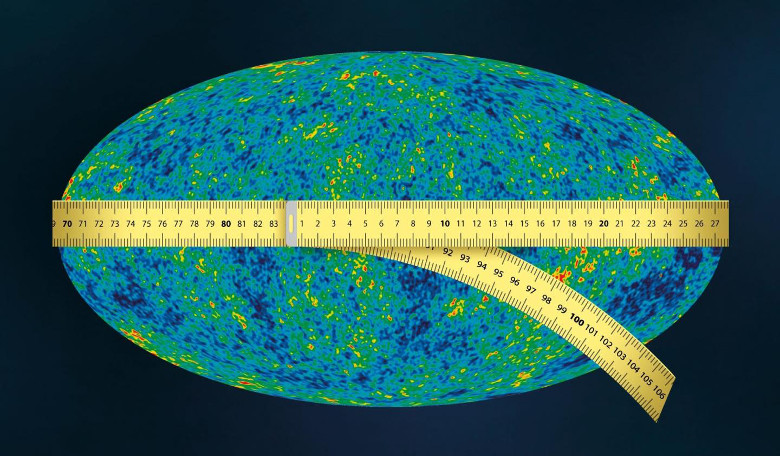Although it is not clear what dark matter is made up of, scientists studying the quantity of this elusive substance have found that in the days immediately after the Big Bang, the proportion of unstable particles in the composition of dark matter was no more than 2 - 5 percent.
According to data from the Planck space telescope, "ordinary" matter, such as stars and galaxies make up only 4.9 percent of all of the matter in the Universe, whereas dark matter accounts for 26.8 percent. The rest is made up of dark energy (68.3 percent) - another elusive phenomena that is hypothesised to permeate all of space.
Despite being over four times as abundant as ordinary matter, no-one really knows what dark matter is made up of, but scientists are certain that it is there due to the way galaxies move as if under the effect of gravity from an unseen source - an effect that was first noticed in the 1930s by Fritz Zwicky when ”peculiarities" in a cluster of galaxies in the constellation Coma Berenices were observed.
Now, scientists from MIPT, the Institute for Nuclear Research (INR) of the Russian Academy of Sciences, and Novosibirsk State University (NSU) have said that the abundance of dark matter has actually decayed since the beginning of the Universe and they know this because of a discrepancy between the cosmological parameters in the modern Universe compared with those shortly after the Big Bang.
“We have now, for the first time, been able to calculate how much dark matter could have been lost and what the corresponding size of the unstable component would be," says a co-author of the study academician Igor Tkachev, Head of the Department of Experimental Physics at INR and a lecturer at MIPT's Department of Fundamental Interactions and Cosmology.
These parameters are namely the Hubble parameter, which describes the rate of expansion of the Universe, and also the parameter associated with the number of galaxies in clusters. By directly measuring the speed of expansion of galaxies and studying clusters, the team found that these parameters vary significantly with data obtained from observations of the modern Universe.
“This variance was significantly more than margins of error and systematic errors known to us. Therefore we are either dealing with some kind of unknown error, or the composition of the ancient Universe is considerably different to the modern Universe," says Tkachev.
One theory which fits this discrepancy is the decaying dark matter (DDM) hypothesis, which states that in the early Universe there was more dark matter, but then some of it decayed. "Let us imagine that dark matter consists of several components, as in ordinary matter (protons, electrons, neutrons, neutrinos, photons). And one component consists of unstable particles with a rather long lifespan: in the era of the formation of hydrogen (hundreds of thousands of years after the Big Bang) they are still in the Universe, but by now (billions of years later) they have disappeared, having decayed into neutrinos or hypothetical relativistic particles. In that case, the amount of dark matter in the era of hydrogen formation and today will be different," says the lead author of the research, Dmitry Gorbunov, a professor at MIPT and staff member at INR.
And, the relative concentration of the decaying components of dark matter the scientists are talking about is in the region of 2 to 5 percent. "This means that in today's Universe there is 5% less dark matter than in the recombination era. We are not currently able to say how quickly this unstable part decayed; dark matter may still be disintegrating even now, although that would be a different and considerably more complex model," says Tkachev.
In other dark matter-related news, Vera Rubin, a pioneering astronomer who helped find powerful evidence of dark matter, died on Christmas day aged 88. Rubin, whose scientific achievements earned her numerous awards and honours, including a National Medal of Science presented by President Bill Clinton in 1993 "for her pioneering research programs in observational cosmology,” was another instrumental figure whose work on galaxies also helped add credence to the idea of dark matter.
"Vera Rubin was a national treasure as an accomplished astronomer and a wonderful role model for young scientists," said Matthew Scott, president of the Carnegie Institution. "We are very saddened by this loss."











